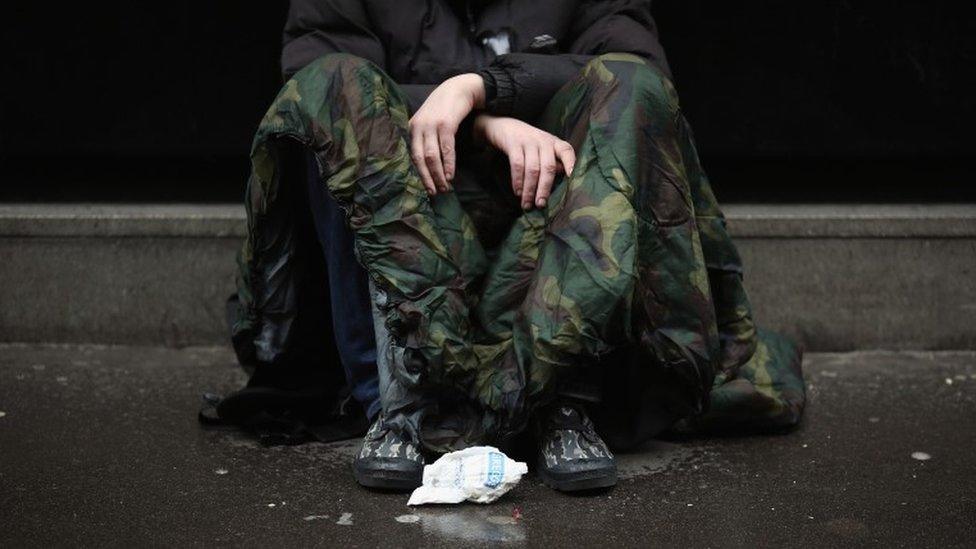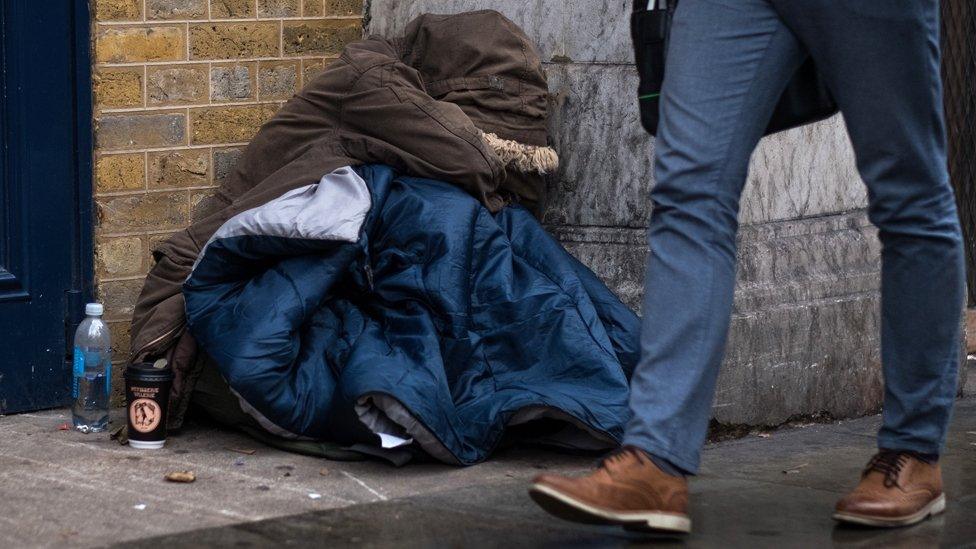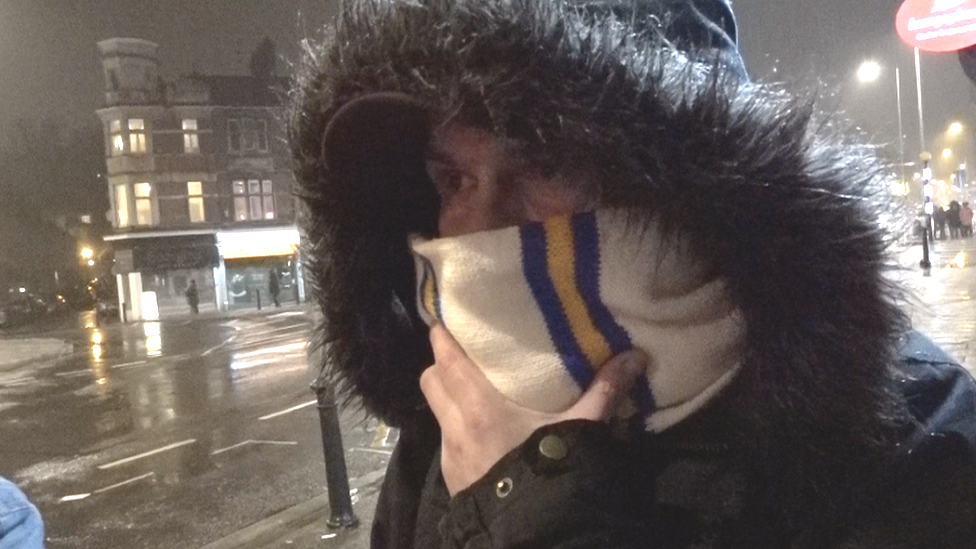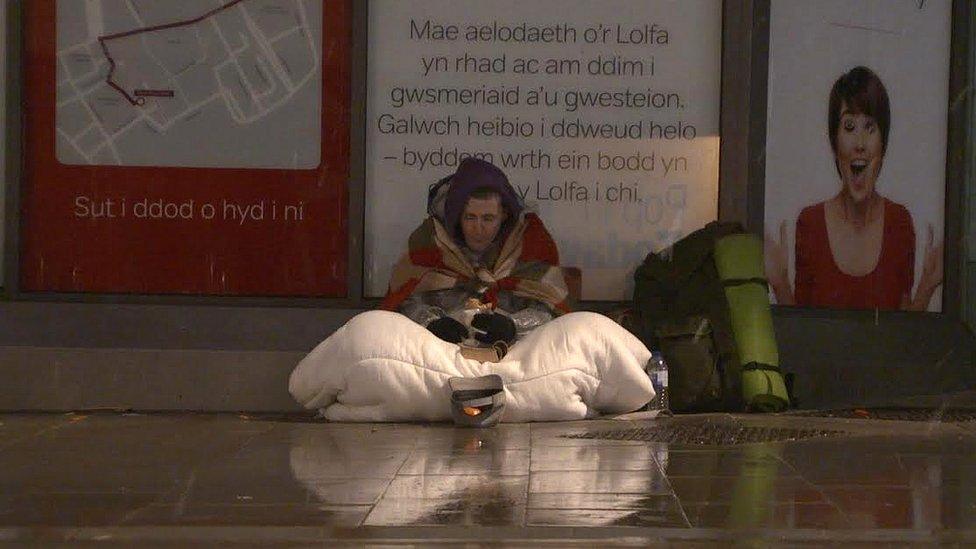Homelessness in Wales: Your questions answered
- Published

Can those in need stay in empty properties? How are the numbers of rough sleepers recorded in Wales? These are some of the things our readers want to know - here are the answers.
How are rough sleepers counted?
A single night count is used to work out how many people are sleeping rough across Wales on a set date.
The 2019 Welsh Government report, external acknowledged there were "significant limitations" to this method as it provides only a "very broad indication" of homelessness numbers.
Prior to the count, there is also a two-week data gathering exercise which uses information from services such as faith groups and outreach workers to provide evidence of levels of rough sleeping over a longer time period.
Charities such as Shelter Cymru and Crisis also conduct their own research.
Can empty accommodation be used to house those in need?
The Welsh Government is working on a scheme to make some privately rented properties available at affordable rent levels, however, this is at an early stage.
There are loans and grants available to help put empty homes to use for those who need them and councils have the power to vary council tax on empty homes to encourage owners to utilise properties.
But the government said this was "not a simple solution to the problems of homelessness".

It said: "Simply placing people into homes that don't meet their needs or isolate them from their support networks could make their problems worse."
The government is funding Housing First projects across Wales. These involve moving homeless people into permanent housing and offering one-to-one support in the hope they will be able to get their own tenancy.
A number of councils work with owners of empty properties and in some cases help to support refurbishment. They then let them out at an affordable rent via a social lettings agency.
Shelter Cymru said: "We absolutely advocate bringing empty houses and buildings back into use to create more homes for people in Wales."
What is the picture across Wales?
In 2018, local authorities counted 158 people sleeping rough across Wales between 22:00 on 8 November and 05:00 on 9 November, down 16% from the results in 2017.
Cardiff had the highest number of people on the streets with 64, followed by Wrexham with 24 and Swansea with 18.
Carmarthenshire, Rhondda Cynon Taf, Blaenau Gwent and Monmouthshire councils recorded no rough sleepers that night.
The two-week data gathering exercise estimated 347 people were sleeping rough across Wales between 15 and 28 October 2018.
In the five years up to 2017, there were an estimated 90 deaths of homeless people in Wales, according to the Office for National Statistics.
During 2017-18, 9,072 households in Wales were assessed as threatened with statutory homelessness, external within 56 days, according to a Welsh Government report, external.
In the same time period, 11,277 households were assessed as statutory homeless and owed a duty to help secure accommodation.

What questions do you have about Wales, or its people and places?
Is there anything you've always wanted to know?
BBC Wales News invites you to submit ideas we can turn into stories.
Use this form to send us your questions:
If you are reading this page on the BBC News app, you will need to visit the mobile version of the BBC website to submit your question on this topic.
We may get in touch if we decide to follow up on your suggestion.
- Published1 February 2018

- Published13 May 2019

- Published19 May 2019
